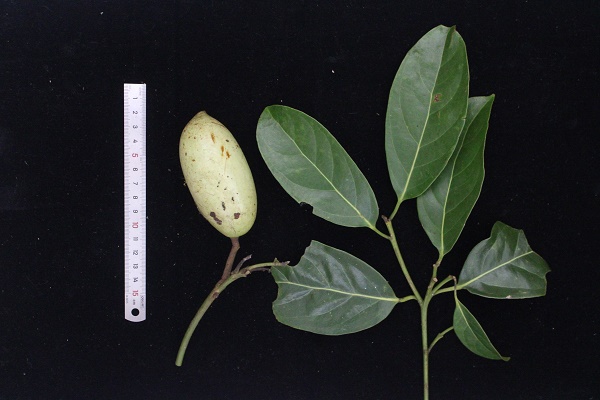The genus Endiandra of the Lauraceae family has approximately 100 species and its diversity is strongly centred in south-eastern Malesia and Australia. In China, there are only three recognized Endiandra species (two endemic) and they are distributed in Yunnan, Guangxi, Hainan and Taiwan.
During recent field surveys in south-eastern Yunnan Province, researchers from Xishuangbanna Tropical Botanical Garden (XTBG) of the Chinese Academy of Sciences collected an unknown Lauraceae species with very large fruits. After careful morphological studies, they confirmed it belonged to the genus Endiandra and was a species new to science.
They named it Endiandra macrocarpa (E. macrocarpa) to refer to its very large fruits compared to other species within the genus Endiandra.
The new species was published in PhytoKeys on April 7.
E. macrocarpa is an evergreen tree up to 15 meters tall. Compared to other Endiandra species occurring in south China and the adjacent regions in Indochina, this species is mainly characterized by its much larger ellipsoidal fruits, as well as glabrous branchlets and puberulent inflorescences.
Currently, E. macrocarpa is only known from the type locality in Maguan County, Yunnan Province, southwest China, with only one mature individual. It is distributed in tropical montane forest in valley, on clay loam soil mixed limestone. So far, no other occurrence of this species in southeast Yunnan and the adjacent regions has been found or reported.









